The Path to Power: Titus’s Early Life and Rise
Influences of a Political Family
Titus was born into a family deeply embedded in Rome’s political sphere, which significantly influenced his journey to power. His father, Vespasian, was a distinguished military commander and eventually became emperor. This familial connection provided Titus with a unique vantage point, opening doors that might have otherwise remained closed.
Growing up, Titus was surrounded by statesmen, generals, and influential figures, from whom he learned the intricacies of Roman politics. This environment undoubtedly shaped his understanding of governance and power. Vespasian’s emphasis on discipline and strategy became ingrained in Titus, equipping him with crucial skills he would need later in life. Titus’s early exposure to the workings of the Roman Senate and political forums offered a practical education in leadership and decision-making.
Studies and Military Training
Education formed the backbone of Titus’s upbringing, as he received a robust grounding typical for a Roman elite. He studied not just philosophy and rhetoric, which were the pillars of Roman education, but also history and law. These studies enabled Titus to develop a critical mindset and an articulate manner, both valuable traits in his future roles.
Titus’s military training was no less rigorous. Vespasian ensured that his son was equipped with a thorough understanding of military tactics and strategies. Titus served in various capacities, gaining firsthand experience in the Roman army. This practical training fortified his leadership abilities and familiarity with the legions he would one day command. The lessons learned on the training grounds and in the field proved indispensable when he led troops during campaigns.
Roles Under Emperor Vespasian
Titus’s ascent to power was marked by crucial roles under his father, Emperor Vespasian. When Vespasian rose to the throne amid the civil strife of the Year of the Four Emperors, Titus became a key figure in stabilizing the newly established Flavian dynasty. One of his most notable assignments was the Siege of Jerusalem. Tasked with quelling the Jewish rebellion, Titus demonstrated exceptional military acumen, capturing and destroying Jerusalem, which was a pivotal victory for Rome.
This success bolstered his reputation, presenting him as a capable leader in both military and administrative realms. Vespasian recognized his son’s talents and entrusted him with significant responsibilities within the empire. Titus took on extensive administrative duties, effectively acting as Vespasian’s representative in many matters. This role afforded him insight into the bureaucratic functions and complexities of running the vast Roman Empire.
Naturally, his combination of military success and administrative experience made Titus an ideal heir. Vespasian meticulously prepared his son for eventual succession, positioning Titus as his primary advisor. This close collaboration cultivated a sense of trust and continuity within the empire’s hierarchy, ensuring a smoother transition of power.
Through these experiences, Titus proved himself a leader capable of carrying forward the legacy of his family while carving out his own legacy. His early life laid a foundation built on strategic learning, practical application, and a steely resolve—a foundation that would support him once he assumed power as emperor of Rome.
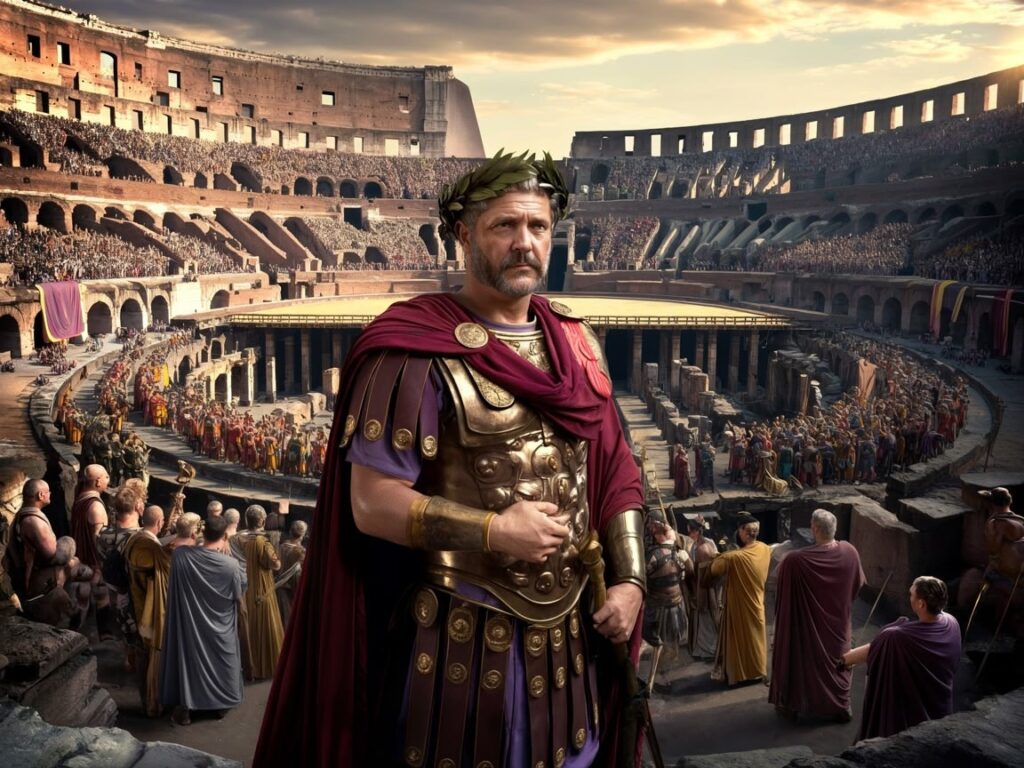
Titus as a Military Commander
Campaign Tactics and Strategies
Titus was known for his disciplined and efficient military strategies. Starting his career under the guidance of his father, Vespasian, Titus quickly rose through the ranks. He developed tactics that combined both direct attacks and strategic patience. One of his preferred strategies involved the use of psychological warfare to undermine the enemy’s morale before launching a massive offensive. A significant aspect of his tactics was his ability to adapt to various combat conditions, such as shifting from open field battles to sieges when needed.
Titus valued intelligence gathering and often used reconnaissance missions to gain an advantage. This allowed him to tailor his tactics according to enemy weaknesses. His strategies emphasized mobility, ensuring his troops could quickly reposition in response to changing battle scenarios. Understanding the terrain was another critical factor that Titus exploited to his advantage, often using the landscape to encircle or outflank adversaries, creating a tactical edge over less mobile forces.
Key Battles: The Siege of Jerusalem
One of Titus’s most notable military achievements was the Siege of Jerusalem in 70 AD during the First Jewish-Roman War. This battle is remembered for its scale and the decisive impact it had on the Roman Empire’s consolidation of power in the region. The siege began when Titus’s forces surrounded the city and cut off all supplies, leading to a long and grueling confrontation. The besiegers constructed a series of fortifications around Jerusalem, isolating it completely.
The fighting was fierce, with Titus employing various siege techniques, such as building large siege towers and battering rams to breach the city’s formidable walls. Despite the intense resistance from the defenders, Titus’s combination of patience and aggressive assault eventually wore down Jerusalem’s defenses. Once inside, Roman forces engaged in street-to-street combat, which culminated in the capture of the Temple Mount and the destruction of the Second Temple, a pivotal moment in Jewish history.
Titus’s approach to the siege showcased his strategic patience. He managed his troops efficiently, rotating them to maintain morale and effectiveness over the months-long battle. This relentless pressure, along with the effective use of newly engineered siege equipment, ultimately led to Roman victory.
Titus’s Leadership Style
Titus was a leader who inspired both fear and loyalty among his troops. Known for his courage on the battlefield, he often led from the front, demonstrating valor and encouraging his men to fight with determination. This involvement in direct combat had a profound effect, as soldiers respected a commander who shared the dangers they faced. His charisma and tactical acumen made him a revered figure in the Roman military.
Moreover, Titus was known for his humane treatment of both his soldiers and defeated enemies, a trait that was somewhat rare for leaders of his time. His decision to grant clemency to certain groups and individuals won him admiration and loyalty, thereby stabilizing conquered regions with less resistance. Titus’s ability to balance strict discipline with empathy gave him a nuanced command style that inspired dedication among his ranks.
As a military commander, his legacy was marked by strategic brilliance, humane leadership, and triumphant victories. These qualities not only defined his military career but also set a precedent for future Roman commanders. His actions on the battlefield, specifically his enduring impact during the Siege of Jerusalem, highlighted his competence and foresight, securing his place in history as an effective and respected leader.
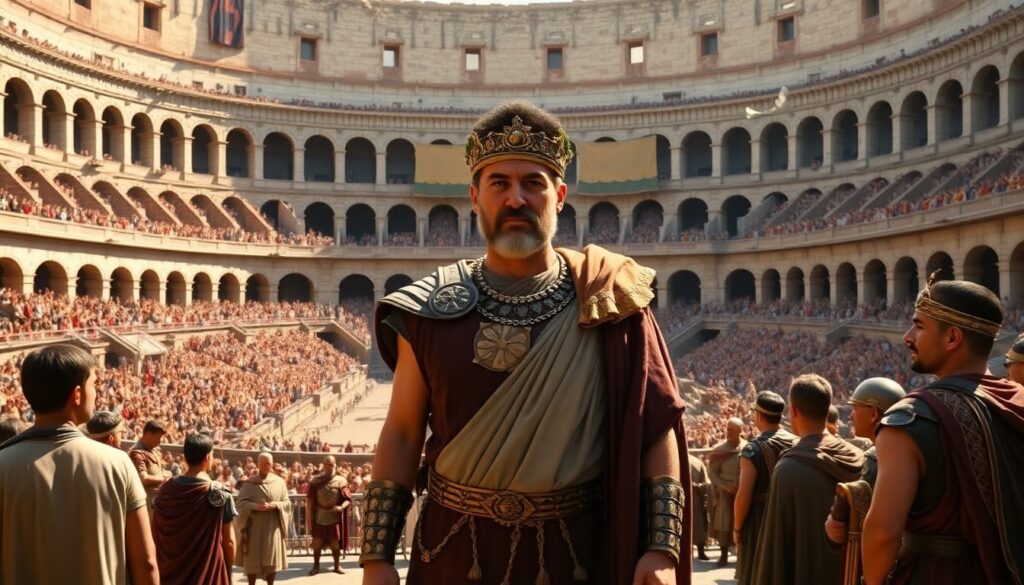
The Siege of Jerusalem: A Defining Moment
Motivations Behind the Siege
The Siege of Jerusalem in 70 AD was an event with significant motivations that shaped its course. For Titus, the Roman general and son of Emperor Vespasian, this siege was about asserting and solidifying Roman power. It was crucial to quell the Jewish rebellion, which had persisted for years, undermining the authority of Rome in the region. The Jewish revolt was not merely an isolated uprising; it symbolized a challenge to the Roman Empire’s control over its territories. Furthermore, the Romans saw this siege as a means to end a cycle of insurrection, ensuring that no other provinces would follow Judea’s example. It was an assertion of strength, intended to demonstrate the futility of resistance against Rome.
On another level, the siege had personal motivations for Titus. As the heir to the throne, he had to prove his leadership capabilities and military prowess. Successfully capturing Jerusalem was a concrete way to achieve this, aligning his legacy with triumph and strategic acumen. For Titus, leading this campaign was also a strategic move to manage public perception and political dynamics within the Roman empire, earning him respect and securing his future as emperor.
The Siege Warfare Techniques
The siege of Jerusalem was a masterclass in Roman warfare, showcasing sophisticated and brutal techniques. The Romans, under Titus’s command, implemented traditional siege tactics, which featured the construction of massive siege ramps and towers. These technologies allowed them to breach the city’s formidable walls. Legionaries crafted large battering rams and catapults, weapons intended to break through both human and material resistance.
To wear down the city’s resolve, the Romans also employed psychological tactics aimed at breaking the spirit of the defenders. They encircled Jerusalem with a wall to effectively cut off supplies and famine soon gripped the city. The Romans were meticulous in their planning, seizing opportunities to sow division within the city’s defenders. Aside from physical measures, these psychological strategies played a key role in weakening the opposition from within.
Another tactic involved using intelligence and negotiation whenever possible. Titus sought to minimize unnecessary bloodshed and destruction, attempting diplomacy with the city’s defenders. His offers of leniency in exchange for surrender showed a pragmatic approach, as he preferred Jerusalem intact to assert Roman control swiftly and with minimal losses.
Impact on Judea and Rome
The aftermath of the Siege of Jerusalem was felt both regionally and throughout the empire. The fall of Jerusalem signaled a decisive end to the Jewish revolt, resulting in significant devastation. The city lay in ruins, with the destruction of the Second Temple marking a profound cultural and religious loss for the Jewish people. This event led to significant Jewish diaspora, profoundly altering the demographic and cultural landscapes.
For Judea, the consequences were harsh. The province was left weakened and under tighter Roman control, with heavy taxation imposed to pay for the rebellion’s cost. Many surviving Jews were enslaved, and their homeland experienced a shift in identity under Roman oversight. The socio-economic fabric of Judea was irrevocably changed as its status was reduced within the empire’s hierarchy.
For Rome, the siege’s success consolidated Titus’s reputation as a competent leader, paving the way for his future role as emperor. Rome reinforced its image as an unstoppable force, quenching rebellions swiftly and effectively. The display of military might increased the empire’s intimidation factor, serving as a deterrent to other potential uprisors. In constructing the Colosseum, using funds acquired partly through victories in Judea, Rome commemorated its power, turning the narrative of conquest into one of civic pride and imperial grandeur. This duality of impact – devastation for Judea and reinforcement of power for Rome – highlights the siege’s historical significance.
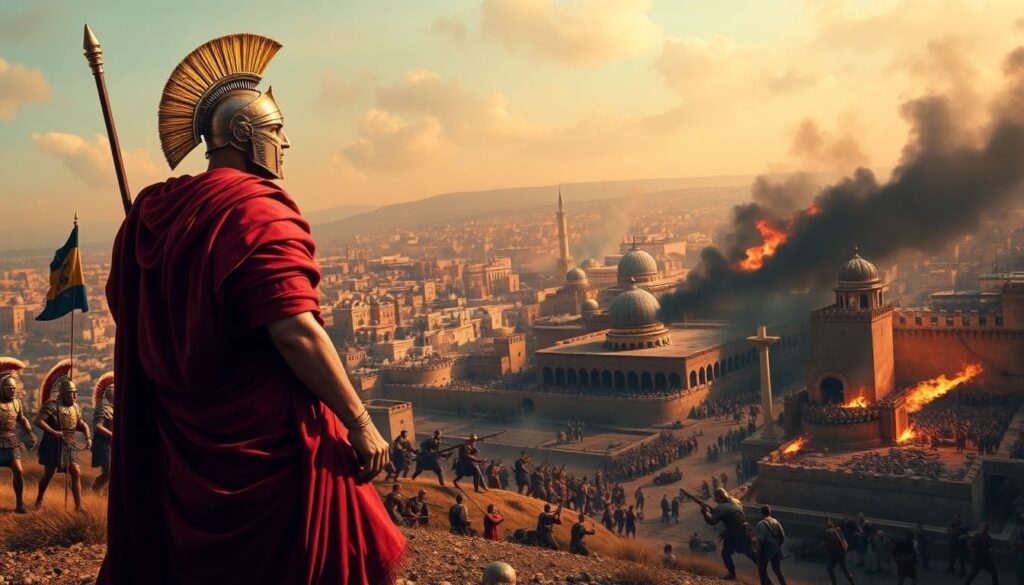
Titus’s Relationship with the Colosseum
Architectural Vision and Construction
Titus played a key role in bringing the Colosseum to completion. Originally conceived under the rule of his father, Emperor Vespasian, the grand amphitheater was a symbol of both architectural ambition and political power. The project aimed to provide the Roman populace with a venue for spectacular entertainments, showcasing the might and sophistication of the empire.
Construction began around 70 AD, and after Vespasian’s death, it fell on Titus to see the project through to its grand opening in 80 AD. The Colosseum’s design was groundbreaking. With its elliptical shape, sophisticated tiered seating, and complex system of entrances and exits—all innovations at the time—the structure could accommodate up to 50,000 spectators. This architectural feat was not just a testament to Roman engineering skills but also a politically savvy move. By funding such an extravagant public works project, Titus aimed to curry favor with the Roman people, providing them with “bread and circuses” to maintain public order and loyalty.
Inaugural Games and Events
The Colosseum’s inaugural games were a lavish showcase fit for an emperor, featuring 100 days of elaborate spectacles that left a lasting impression. These events included gladiator contests, animal hunts, mock sea battles, and dramatic re-enactments of famous battles. Titus spared no expense, ensuring the games would be remembered for generations. This approach was very much in line with the Roman tradition where emperors used such public displays to demonstrate their generosity and commitment to the prosperity of the empire.
The opening events attracted a diverse audience from all over the Roman Empire, creating an atmosphere of unity and celebration. Beyond the grandeur, the games also served a political purpose. Titus strategically used these events to entertain and distract the populace, strengthening his image as a benevolent ruler who provided for his people’s enjoyment. This strategy helped solidify his reputation and legacy as an effective leader during his relatively short reign.
Long-Term Symbolism of the Colosseum
Over time, the Colosseum transcended its initial purpose as merely a venue for entertainment. It evolved into a symbol of the grandeur and resilience of the Roman Empire itself. The colossal structure stood as a testament to Rome’s architectural innovation, symbolizing its peak cultural and political influence. For centuries, the Colosseum has fascinated onlookers and continues to attract visitors worldwide, highlighting its lasting appeal.
Titus’s association with the completed Colosseum left a mark not just on the physical landscape of Rome, but also on its cultural memory. As an icon of imperial power and spectacle, the Colosseum became a stage where Rome’s strength and civilization were not just displayed but celebrated. Its enduring presence reminds us of Rome’s ability to construct awe-inspiring structures that required intricate planning, vast resources, and engineering expertise.
In many ways, the Colosseum can be seen as a monument to Titus’s legacy, reflecting his contributions to Rome’s infrastructure and his ability to harness architecture as a means of uniting and controlling the empire. The Colosseum continues to inspire as a symbol of Roman success in architecture and governance, echoing the lasting influence of Emperor Titus even after his reign ended. Through the Colosseum, Titus has remained a figure entwined with Rome’s historical narrative—a leader whose foresight crafted one of the most iconic structures in history.
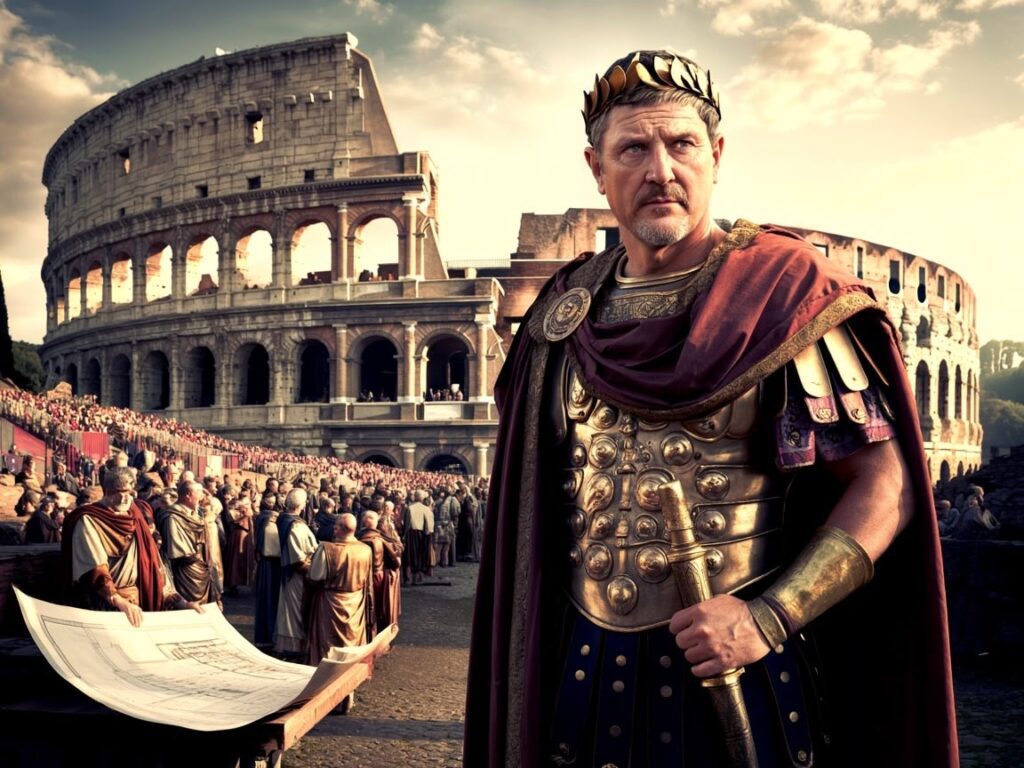
The Reign of Titus: Short but Memorable
In the historical tapestry of Roman emperors, Titus stands out not only for the monumental feats he achieved in a short span but also for his approach to leadership. Known for his brief yet impactful reign, Titus left a lasting impression on both the Roman Empire and history.
Policies and Domestic Affairs
Titus’s approach to governance was marked by a commitment to justice and efficiency. After ascending to the throne in 79 AD, he sought to distinguish himself from the often nefarious and controversial image of his predecessors. Titus was known for upholding the law and ensuring that officials were honest and responsible. He tried to bring a sense of fairness to a system that had seen its share of corruption.
During his reign, Titus attempted to foster loyalty among the Roman elite and provide stability to the empire. His policies aimed at strengthening the economy and ensuring the prosperity of Rome’s citizens. He limited the power of the imperial freedmen, who had gained significant influence under previous emperors, thus restoring some balance in the governance of the empire. This approach won him the favor of the Senate and the people alike.
Handling of Natural Disasters
Titus faced multiple natural disasters during his time as emperor. In the first year of his reign, Mount Vesuvius erupted catastrophically. This disaster destroyed the cities of Pompeii and Herculaneum, burying them under ash and debris. Titus’s response to the disaster showcased his leadership qualities. He immediately organized relief efforts, using his resources to aid the victims. According to historical accounts, he visited the devastated areas personally, ensuring that the affected regions received the help they desperately needed.
In addition to the eruption, Titus had to deal with a fire that swept through Rome and an outbreak of plague. His administration faced these challenges head-on. Titus showed his commitment by rebuilding parts of the city damaged by fire and allocating imperial funds to support recovery efforts. His empathetic approach and tangible actions during these times won him public admiration and respect.
Infrastructure and Public Works
One of Titus’s most enduring contributions to Rome was in the realm of infrastructure and public works. Perhaps his most famous accomplishment was the completion of the Colosseum. Originally begun by his father, Emperor Vespasian, the Colosseum, known as the Flavian Amphitheater, became a symbol of Rome’s architectural and engineering prowess. Titus inaugurated the amphitheater in 80 AD with games that lasted for a hundred days, captivating the people with spectacles of gladiatorial combats and mythological dramas.
Aside from the Colosseum, Titus initiated several other public works projects that enhanced the city of Rome and its provinces. He continued the construction of the Baths of Titus, which became a popular destination for relaxation and socialization. Such projects not only improved the quality of life for Romans but also served as a testament to the empire’s greatness.
Titus’s reign may have been short, lasting only two years, but his contributions were significant. Balancing diplomacy, relief efforts during disasters, and ambitious public works defined his legacy. His leadership style and dedication to improving the empire set a standard for those who followed. Even today, the feats accomplished under his rule are studied and admired for their profound impact on Roman history.
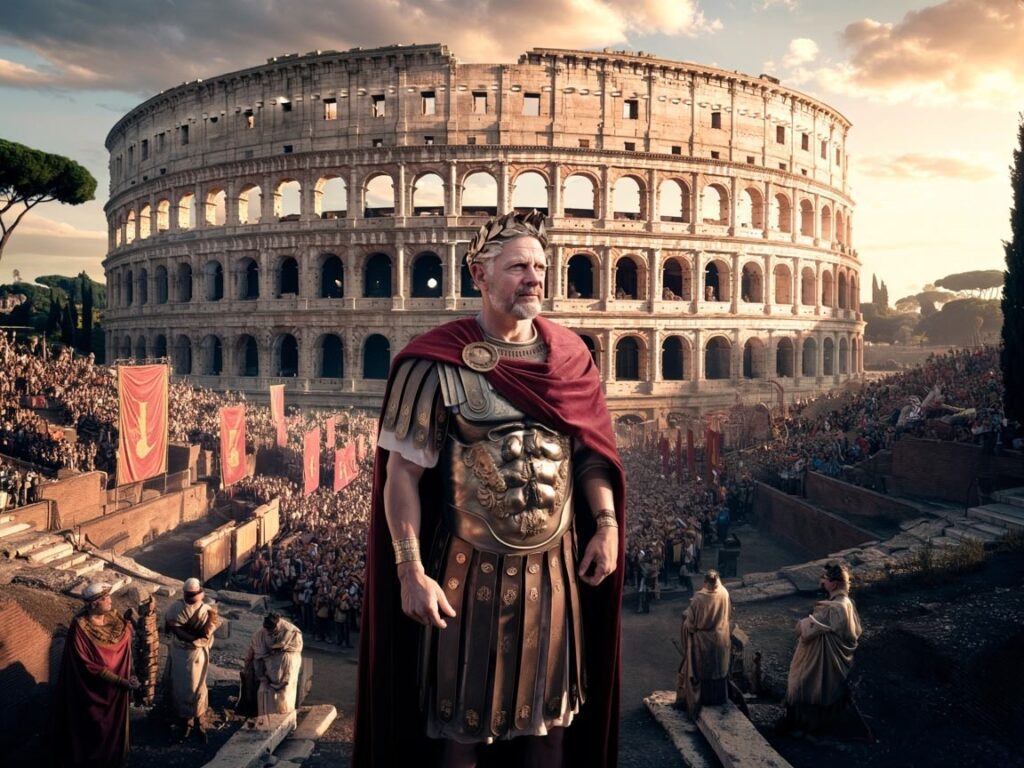
Titus as a Benevolent Leader
Public Image and Popularity
Titus, the Roman emperor from 79 to 81 CE, is remembered not only for his military and political accomplishments but also for his strong public image and popularity. He inherited a stable empire from his father, Vespasian, and continued to foster goodwill within the Roman Empire. His ascent to power came with many expectations, and he did not disappoint. Known for his charisma, Titus endeared himself to both the Senate and the people, an impressive feat considering the previous emperor, Nero, had left a mixed legacy.
One aspect of Titus’s appeal was his openness and accessibility. Unlike some of his predecessors, who were distant or even tyrannical, Titus made efforts to be seen and heard by his people. These interactions helped build a sense of connection with the citizens, allowing them to feel involved in the decisions that shaped their lives. His public appearances were marked by a demeanor that combined firmness with warmth, projecting power tempered by human empathy.
Titus also enjoyed the favor of the Roman military thanks to his valor and leadership during the Jewish War, which culminated in the Siege of Jerusalem. This victory not only supplied the empire with immense spoils but also established his reputation as a successful military commander. Such achievements resonated deeply with Romans, who valued strength and strategic thinking. The successful conclusion of this campaign showcased Titus as a protector of Roman interests and a unifier of the state, enhancing his standing among the people and the military alike.
Charitable Deeds and Reforms
Titus’s brief reign is notable for various actions that revealed his generous spirit and forward-thinking outlook. His approach to leadership was not just about maintaining power or expanding territory; it involved genuine concern for improving the lives of Roman citizens. One of his most recognized acts of kindness was his response to the catastrophic eruption of Mount Vesuvius in 79 CE. This disaster wreaked havoc on the cities of Pompeii and Herculaneum, and Titus responded swiftly by providing aid to the affected regions, using his resources and treasury to fund relief efforts.
Additionally, the Great Fire of Rome in 80 CE posed another significant challenge. Titus again showcased his benevolence by initiating reconstruction efforts and offering financial assistance to those who had lost homes and livelihoods. He alleviated much of the suffering by funding the rebuilding of Rome’s infrastructure, which underscored his commitment to his citizens’ welfare. These acts strengthened his image as a compassionate leader who took decisive steps in times of need.
Titus also launched several reforms to promote a more equitable society. He addressed corruption and sought to reduce arbitrary taxes, actions that resonated with the populace who had long felt the sting of financial exploitation. By implementing policies that favored fairness over personal or political gain, Titus reinforced trust in imperial governance.
The completion of the Colosseum is another example of Titus’s lasting impact. Although his father initiated its construction, it was Titus who oversaw its completion and dedicated it with games that lasted over a hundred days. These games were free for the public, demonstrating his desire to provide entertainment and a sense of unity among the different classes within Roman society. The Colosseum quickly became a symbol of Roman engineering prowess and served as a venue where citizens could gather in shared experiences of sport and spectacle.
Overall, Titus’s legacy as a benevolent leader is marked by his compassion, reformative endeavors, and strategic generosity. Despite the challenges he faced during his short reign, he left a lasting impression of leadership that combined strength with humanity. His policies and charitable deeds helped secure his reputation as one of the more enlightened emperors, whose primary focus was on the betterment and stability of the Roman Empire.
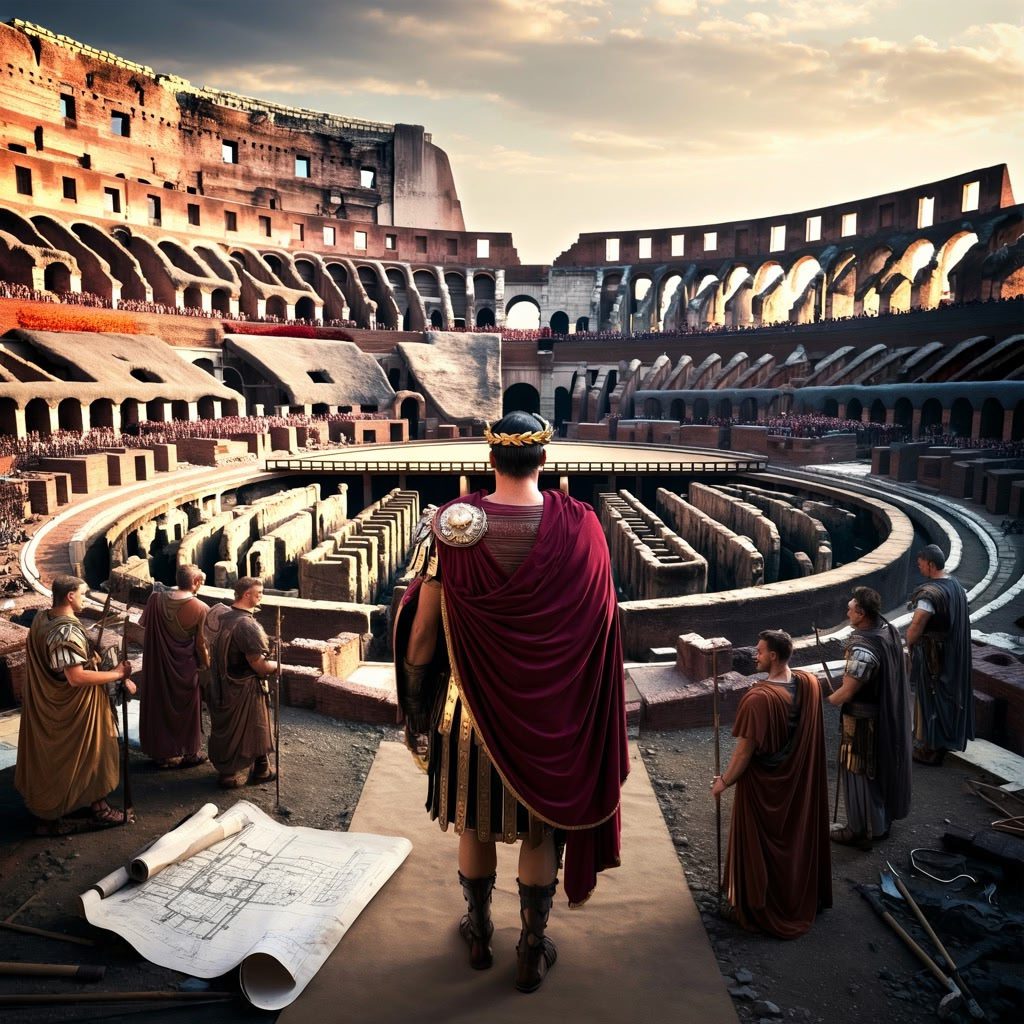
Challenges During Titus’s Reign
Managing the Aftermath of the Eruption
Titus faced one of the greatest natural disasters of the Roman era—the eruption of Mount Vesuvius in 79 AD. This catastrophic event obliterated the city of Pompeii and other nearby settlements, leaving widespread devastation. As a leader, Titus had to address the immediate humanitarian needs. The scale of the disaster was immense, with thousands losing their homes, livelihoods, and lives. The ash and debris covered cities and farms, creating a long-term impact on the region’s economy.
Titus’s response was swift and decisive. He launched a significant relief effort, mobilizing resources across the empire to assist the affected regions. He personally donated considerable funds to help rebuild cities and provide aid to survivors. This response not only provided immediate relief but also helped reinforce his image as a compassionate emperor. His efforts were crucial in managing both the humanitarian and economic crises that the eruption caused.
Dealing with Political Rivals
Titus ascended to power amidst a backdrop of political intrigue and potential rivalries. His father, Emperor Vespasian, had established the Flavian dynasty, but Rome’s political landscape was fraught with ambitious senators and generals seeking influence. Titus, aware of the fragile peace, needed to navigate this environment carefully to maintain his position.
To address these challenges, Titus sought to consolidate his power through strategic alliances and demonstrated military prowess. He had already proven himself during the Jewish War, earning respect and recognition. Despite this, some viewed him with skepticism due to his close ties with the Praetorian Guard and their notorious reputation.
Titus’s focus on diplomacy and governance helped neutralize threats. He took steps to limit corruption within the administration and promote competent individuals. By showcasing a firm yet fair leadership style, Titus managed to suppress dissent and maintain stability.
Ensuring Security and Stability
Security and stability were central concerns during Titus’s reign. The Roman Empire was vast, and maintaining order across its territories required constant vigilance. There were threats both from within its borders and from external adversaries. Titus committed to fortifying defenses and ensuring the military remained disciplined and robust.
On foreign fronts, Titus dealt with various tribal incursions and surrounded states that often tested Rome’s patience. He understood the importance of peace and spent considerable effort consolidating borders and negotiating treaties. When needed, he showcased military might to discourage rebellion and unrest.
Within the empire, Titus aimed to strengthen internal security through reforms. Addressing corruption among officials and ensuring fair administration were high on his list. He prioritized legal reforms to ensure justice was accessible and upheld across classes. Titus’s focus on meritocracy and justice helped build trust in his leadership, reducing the likelihood of internal strife.
Despite these challenges, Titus is remembered as a benevolent and effective ruler who managed crises with wisdom. His reign, although short, was marked by efforts to improve Rome’s infrastructure and public welfare. Titus balanced the demands of leadership by emphasizing compassion and competence in governance, creating a legacy that outlasted the difficulties of his time.
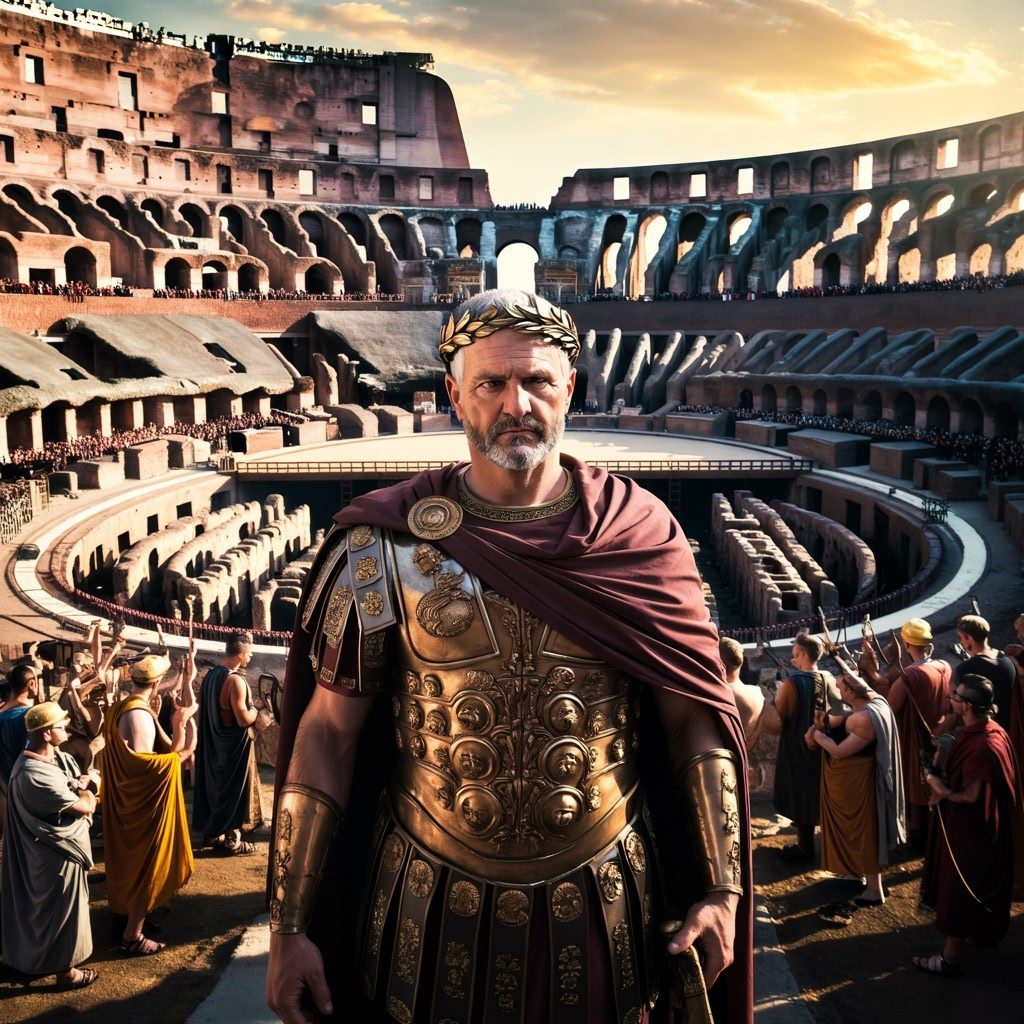
Cultural and Economic Influence
Art and Literature in Titus’s Time
During the reign of Emperor Titus, art and literature blossomed, reflecting both traditional Roman values and new influences. The period was marked by monumental architectural works like the completion of the Colosseum, a symbol not only of Roman engineering prowess but also of its cultural dominance. This grand amphitheater hosted gladiatorial games and public spectacles that influenced various forms of Roman art and literature.
Artists and writers drew inspiration from these events, incorporating themes of heroism and the struggles of man versus beast into their works. Poetry flourished, with poets like Martial and Statius capturing the essence of Roman society, its splendor, and its underlying tensions. Martial, known for his epigrams, painted a vivid picture of Roman life through sharp wit and keen observation. Statius, on the other hand, wrote epic poetry that celebrated the achievements of Rome and its leaders, including works dedicated to the Flavian family, underlining the emperor’s cultural significance.
Literature also served as a medium to propagate the emperor’s image as a benevolent and capable ruler. Titus was often lauded for his virtues and leadership, reinforcing the ideal of a just and noble emperor in Roman thought. The fusion of historical events, like his siege of Jerusalem, into poetic and artistic narratives further immortalized his era in the cultural consciousness of Rome.
Economic Innovations and Trade
Titus’s reign also saw economic innovations that spurred trade and prosperity across the Roman Empire. One notable development was the improvement of infrastructure, enhancing roads and ports crucial for trade expansion. These improvements facilitated smoother movement of goods, people, and communication across vast distances, strengthening Rome’s economic reach.
Trade blossomed under Titus, not just within the empire, but also with foreign lands. The Mediterranean Sea remained a central trade route, connecting Rome with regions in Africa, the Middle East, and beyond. Luxury goods such as spices, silks, and precious metals flowed into Roman markets, enriching the empire’s economy and providing Romans with a taste of the exotic. This influx of goods diversified Roman consumer culture and influenced domestic production as artisans emulated exotic styles and techniques to cater to changing tastes.
Additionally, Titus’s policies favored economic stability. By ensuring the protection of trade routes and enforcing laws that benefited merchants and traders, he nurtured a thriving economic environment. His administration also tackled financial issues inherited from previous reigns, focusing on rebuilding Rome’s wealth and addressing debt concerns. The economic health of the empire under Titus was vital for maintaining public contentment and supporting social programs, such as the provision of grain to poor citizens—a practice that underscored the emperor’s role as a provider and protector of the people.
In Titus’s time, economics and culture were deeply intertwined. The wealth generated through trade funded artistic endeavors, while art and literature, in turn, supported the economy by promoting Roman ideals and enhancing the empire’s cultural appeal across its territories. The intricate relationship between culture and economy during Titus’s reign not only reinforced Rome’s position as a powerful, civilized state but also laid the groundwork for future emperors to continue this legacy of cultural and economic interconnectivity.
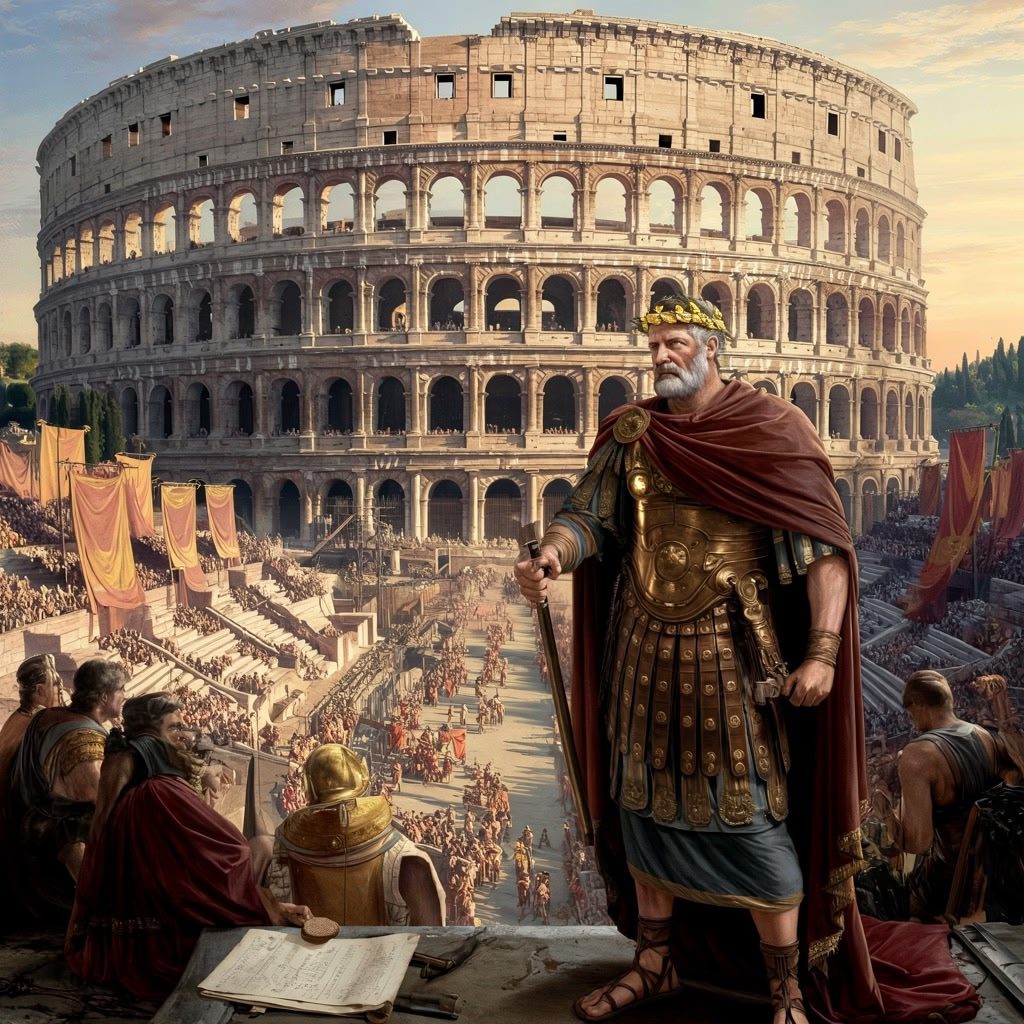
The Legacy of Titus in Roman History
Successors and Historical Perception
Titus, celebrated as one of Rome’s capable emperors, left a legacy that both his successors and historians have scrutinized. Ascending to the throne in AD 79, after the death of his father Vespasian, Titus had big shoes to fill. He quickly proved his mettle by finishing the grand Colosseum, a symbol of Roman might and ingenuity. This architectural wonder was not only a personal ambition but a testament to Roman engineering. His short reign, spanning only two years, was marked by significant challenges, including the eruption of Mount Vesuvius and a devastating fire in Rome. Leaders today might shy from disaster, but Titus engaged directly, leading relief efforts that showcased his commitment to the people.
Upon his death in AD 81, his younger brother Domitian succeeded him. Domitian’s rule starkly contrasted with Titus’s, eventually veering into tyranny. Despite these differences, Domitian did maintain some of Titus’s policies, notably in public works. Yet, over time, the narrative around Titus grew complex. Roman historians, often influenced by political currents, praised him for his benevolence and military prowess, yet some also hinted at personal extravagance.
Titus’s character and deeds took firm root in the annals of Roman history, upheld by figures like the historian Suetonius, who portrayed him as a well-loved ruler. Contrasts between Titus and his contemporaries often highlight his balance of authority and compassion, a trait not common in the Roman imperial line.
Titus in Modern Popular Culture
As with many historical figures, Titus’s stories have transcended time, finding places in modern culture and arts. From literature to film, his deeds resonate, albeit sometimes with creative liberties taken for dramatic effect. These portrayals often emphasize the two key facets of his life: his military skill, highlighted during the siege of Jerusalem, and his leadership style.
In literature, novels and plays frequently explore the tension between his ruthless military campaigns and his more compassionate nature as emperor. This duality serves as fertile ground for exploring broader themes of power, duty, and humanity. Historical fiction fans often find themselves captivated by such narratives, drawn to the strength and vulnerability within Titus’s story.
Cinema and television bring a visual dimension to his life, with shows and documentaries shedding light on both his public and private personas. His time commanding Roman legions in Judea remains a point of focus, dramatizing his successful yet brutal campaign that resulted in the fall of Jerusalem. The tension between his image as a benevolent ruler and the harsh realities of his military conquests offers drama ripe for the screen.
Moreover, the Colosseum itself, as a centerpiece of his accomplishments, has become a cultural icon. This grand arena, still standing despite the wear of centuries, symbolizes the might of Rome and by extension, the achievements of Titus. Tourists and history buffs flock to it, its arches framing stories of past glories, giving continuity to Titus’s legacy. Popular history shows and educational programs regularly feature the Colosseum, further cementing his place in both ancient and modern narratives.
Titus’s legacy, etched in history and enlivened in popular culture, endures as a compelling chapter in the saga of the Roman Empire. Despite the brevity of his reign, his impact ripples across time, demonstrating that leadership, when intertwined with vision and empathy, leaves an indelible mark.
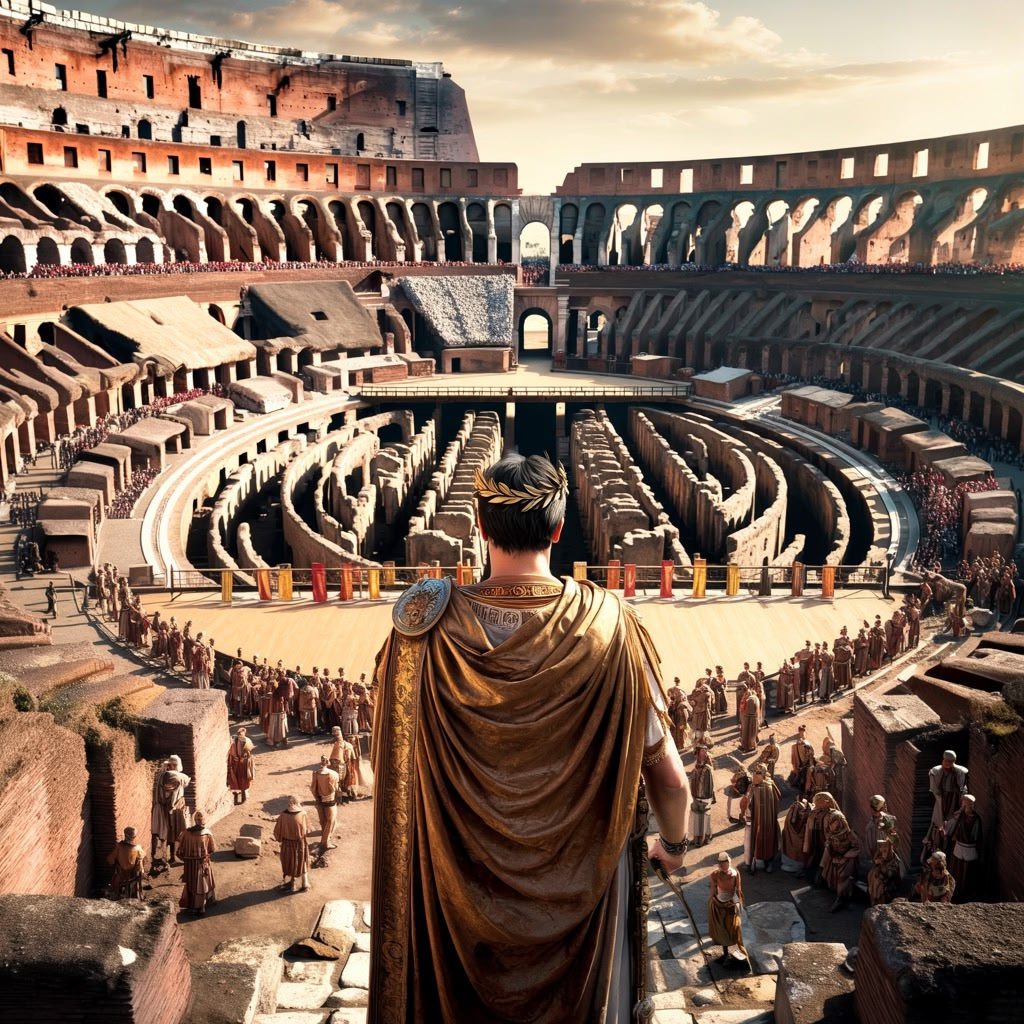
Conclusion
Titus, who rose to become a pivotal figure in Roman history, left a robust legacy through his remarkable achievements as a leader. One of his crowning glories remains the completion of the Colosseum in Rome. This architectural marvel stands as a testament to Roman engineering and the grandeur of the empire at its peak. Initially started by his father, Vespasian, the Colosseum became a significant cultural center under Titus, hosting spectacular events that highlighted both entertainment and Roman power. The structure itself, an elliptical amphitheater seated close to 50,000 spectators and showcased the might and sophistication of Roman architecture, embodying elements of design and utility that would awe the world for centuries.
Siege of Jerusalem
Titus’s military leadership shone during the First Jewish–Roman War, particularly with the Siege of Jerusalem in 70 AD. This brutal campaign underscored his strategic prowess but also highlighted the dark side of imperial conquest. The siege led to the destruction of the Second Temple, an event that profoundly impacted Jewish history and culture. The aftermath saw the dispersal of Jewish populations and marked a pivotal shift in the region’s religious dynamic.
Titus as a Leader
Titus became emperor in 79 AD following his father’s death. Known for his effective governance and public works, he focused on relief efforts when natural disasters struck. His reign was short yet impactful, easing transitions toward a more stable and prosperous Roman society. His prompt action during calamities like the eruption of Mount Vesuvius and a devastating fire in Rome demonstrated his commitment to his citizens’ welfare. Titus’s ability to act decisively during these crises earned him admiration and loyalty, reflecting his strengths as a benevolent ruler who prioritized the people’s needs over the mere display of power.
Legacy of Generosity
Despite the often harsh realities of Roman rule, Titus’s legacy includes acts of personal generosity. He initiated public works and social welfare programs that endeared him to many. His reputation as a benevolent leader who invested in public infrastructure underscored an era that encouraged social development along with military conquest. Emperor Titus balanced the scales of militaristic rigor with humane governance, a blend that resonated through subsequent generations, both in memory and record.
Titus’s Lasting Impact
Titus’s reign, though short, set a precedent for leadership that resonated beyond his time. The prosperity and peace achieved under his rule laid a foundation for future emperors. By nurturing both Roman architecture and its cultural ethos, his contributions extended well beyond his tenure. While future emperors contended with various other wars and challenges, they often looked back on Titus’s strategies and social programs for guidance.
In conclusion, Emperor Titus is remembered not just for his military achievements and architectural accomplishments, but also for the example he set in leadership and governance. His life and reign encapsulate the complexity of Roman rule — a blend of power, culture, and humanity. Through times of glory and adversity, Titus’s actions and decisions left a deep imprint on Rome, demonstrating that a true leader’s legacy transcends their lifetime, influencing both the present and generations yet to come.

